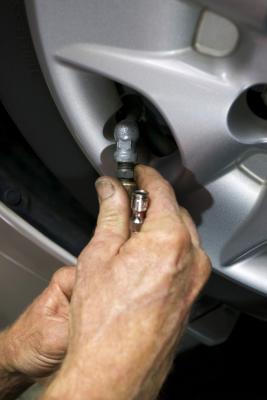
As tires turn and repeatedly come into contact with the surface of the road, tiny bits of rubber break off and over time these bits add up to significant wear. Ideally, a tire should wear evenly across the entire tread surface, but when a tire is not balanced, aligned or inflated properly, uneven wear occurs. Specific wear patterns appear from each type of problem causing uneven wear, so that it’s often easy to identify the problem.
When the tread in the tire’s center wears faster than that on the edges, the most common cause is overinflation of the tire. Too much air in the tire causes the sides to lift up off the ground, so only the center strip is touching the road. A secondary cause of this wear pattern is the use of tires that are too wide for the rims. When the sides of the tire are squeezed together to fit onto the too-narrow rim, it causes the tread surface to bulge out so that only the center strip of tread is in contact with the road.
This pattern is the converse of excessive center wear and is caused by underinflation of the tire. When a tire is too soft, it spreads out where it hits the road so the car’s load is on the outer edges. If a check with an accurate tire gauge reveals the correct pressure, then this wear pattern may be caused by a bent or worn steering component that is forcing the tires out of alignment.
Feathering is a wear pattern where each tread rib develops a smooth, rounded edge on one side and a sharp edge on the other. It is easy to check by running a hand across the tread from one side to the other and back again. Your hand will easily catch those sharp edges. Feathering is usually caused by worn tie rods or ball joints, which allow the front edges of the tire to angle either too far toward the car’s center or too far away from it. It may also be caused by deteriorated bushings in the front suspension, forcing the wheel out of alignment.
A tire that is worn more on one side is on a wheel with excessive positive or negative camber. Instead of standing vertical to the road, the tire’s top is leaning too far either toward the car’s center or away from it, forcing the tire to carry its load on just one edge. This kind of misalignment may be caused by sagging springs, worn ball joints or worn control arm bushings.
Cupping, also called scalloping, produces a pattern of dips and ridges around the edge of the tread. It’s caused when a vehicle with worn shock absorbers or springs bounces up and down on the tire. This pattern may also occur with worn ball joints, wheel bearings or bushings, and occasionally is the result of an out-of-balance wheel.